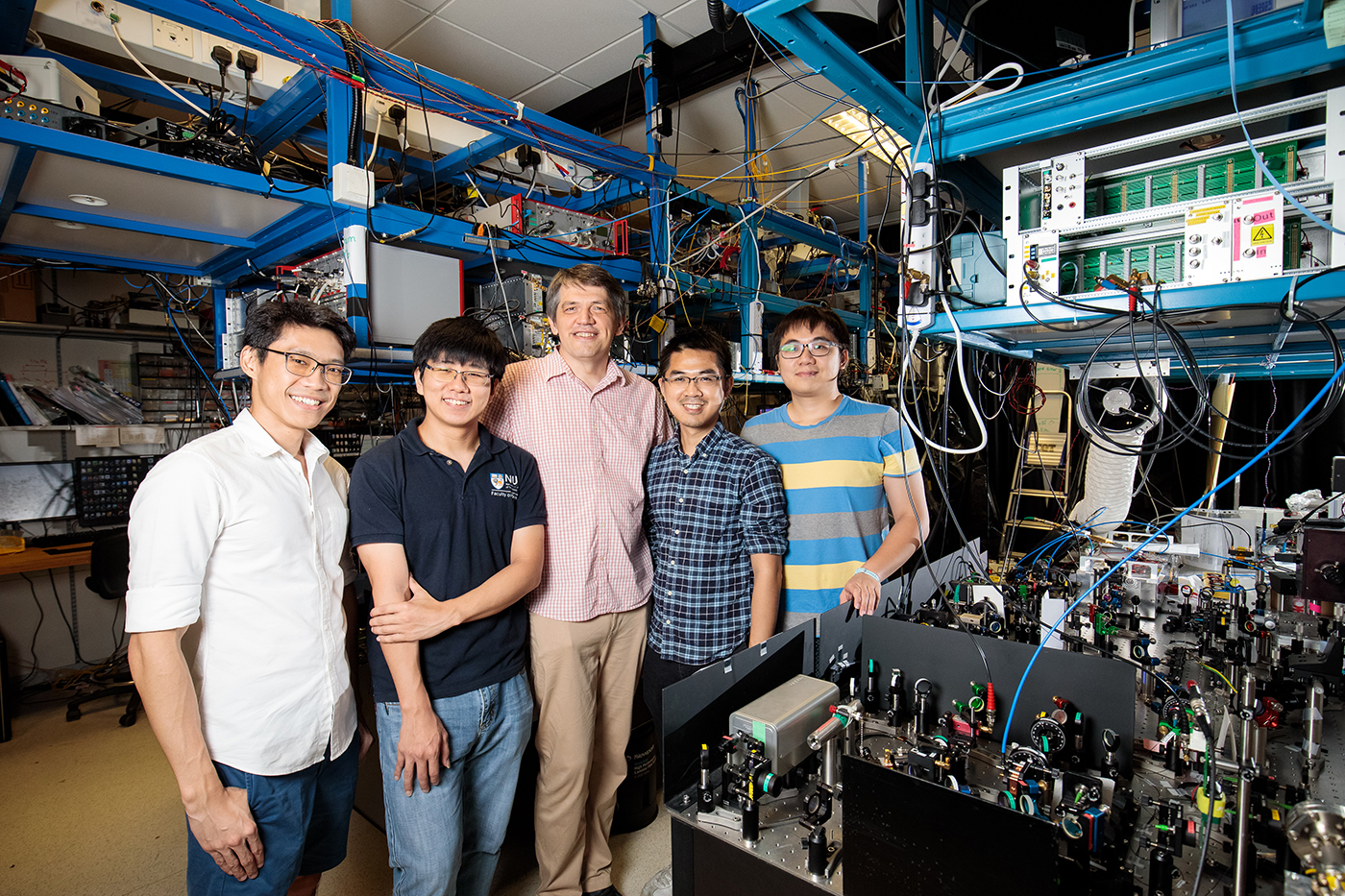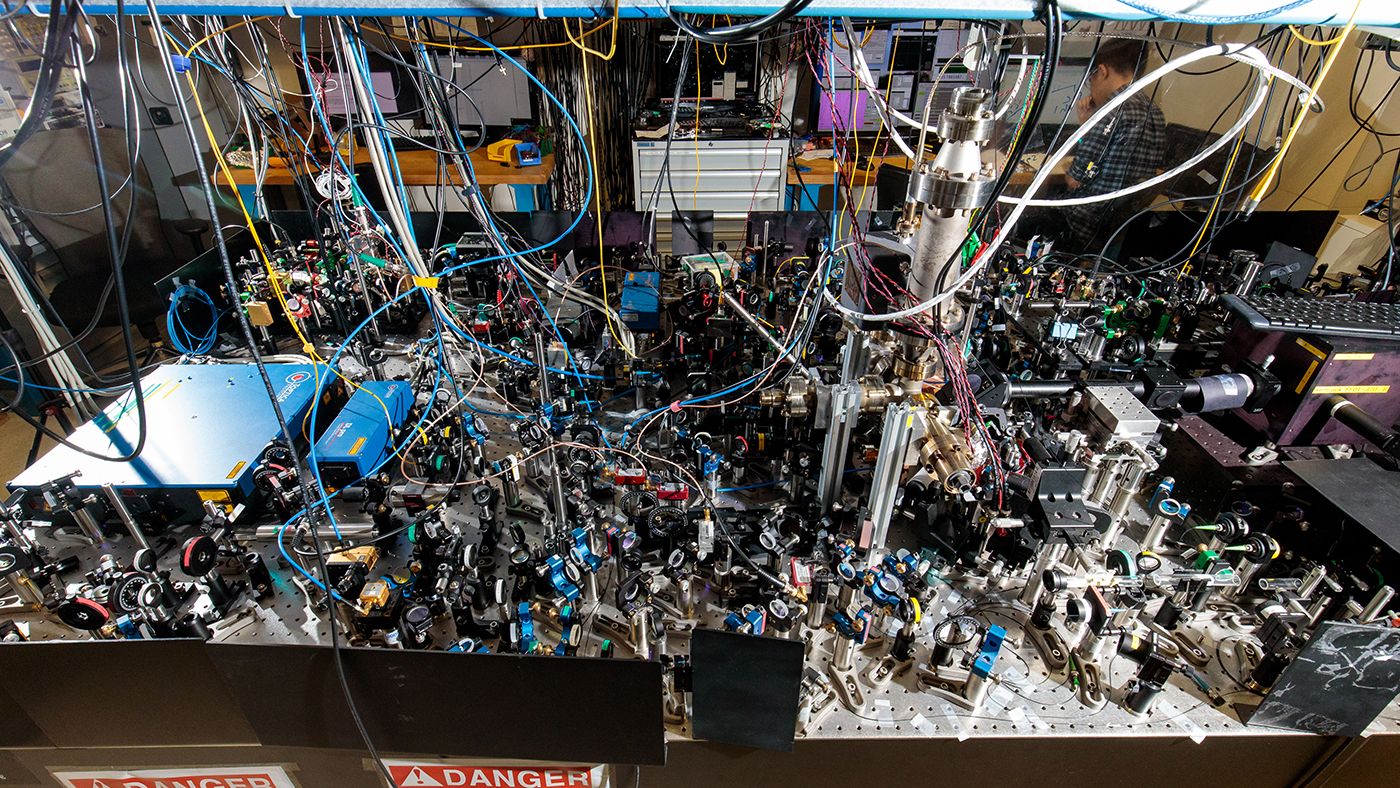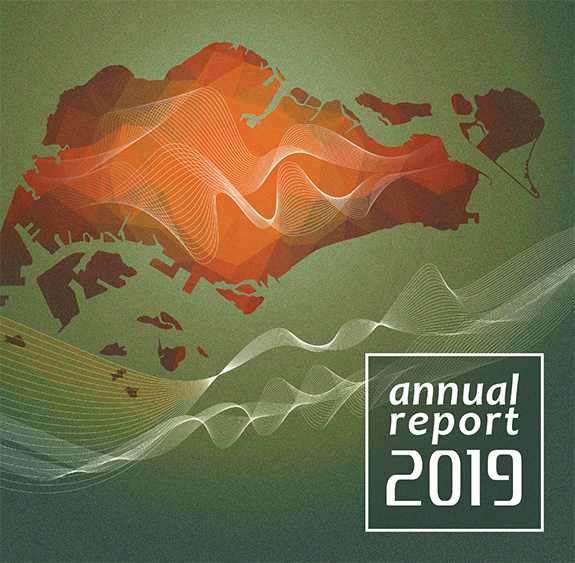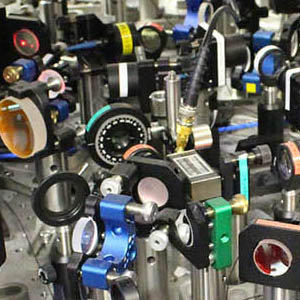Highlights
Making headway with a hybrid approach to quantum computing
 The group of Dzmitry Matsukevich is encoding information in the motional modes of ions for quantum computation. Pictured from left to right are Jaren Gan, Kim Mu Young, Dzmitry, Nguyen Chi Huan and Tseng Ko-Wei.
The group of Dzmitry Matsukevich is encoding information in the motional modes of ions for quantum computation. Pictured from left to right are Jaren Gan, Kim Mu Young, Dzmitry, Nguyen Chi Huan and Tseng Ko-Wei.
The group of CQT Principal Investigator Dzmitry Matsukevich is making headway with a hybrid approach to quantum computing with trapped ions. In a paper published on 27 April in Physical Review Letters, the researchers report the demonstration of a nonlinear gate for universal quantum computation.
The team’s hybrid approach involves encoding information in the motion of the ions, as well as using the ions’ internal energy states. This could be a route to doing bigger calculations using fewer physical bits.
Dzmitry’s trapped ions also featured in the Nikkei Asia Review on 5 May in a feature about quantum computing in Asia. The reporter describes a visit to see “two slightly blurred gray squares on a computer monitor. The squares are trapped ions, held in near total stillness by lasers: the foundational element of a quantum computer”.
The research paper, by Jaren Gan, Gleb Maslennikov, Tseng Ko-Wei, Nguyen Chi Huan and Dzmitry, explains in detail exactly what can be done with these ytterbium ions.
Doing more with less
Confined in a trap, ions oscillate. This wiggling motion is a harmonic oscillation – analogous to a mass bouncing on a spring. The ideal harmonic oscillator has infinitely many energy levels. If the researchers can move an ion between its motional energy levels with good enough precision, a single ion could encode in its oscillation more information than even the largest set of qubits. This approach is known as continuous variable quantum computation.
Using continuous variables may help researchers get around the challenge of scaling quantum hardware. Current quantum computers have just tens of qubits, but we expect to need thousands or even millions of qubits using discrete variables to do better at solving complex real-world problems.
“In practice, noise and imperfections of our experiments limit the number of harmonic oscillator states that we can control – in our experiment it is usually between five and ten,” explains Dzmitry. “But even in this case the amount of information the oscillator can hold is equivalent to two or three qubits.”
The possibility of reducing the number of ions needed for complex computational problems makes the hybrid approach appealing.
“There has not been so much work in this direction, so I hope that we can do something that other people haven’t thought about,” says Dzmitry. The demonstration of a conditional beam splitter (CBS) gate, reported in the new paper, is a first achievement.
A logical next step
 This is what the team’s fledging quantum computer looks like. The setup occupies a table measuring 4m x 1.5m. In total, there are about 400 to 500 optical elements such as mirrors and lenses.
This is what the team’s fledging quantum computer looks like. The setup occupies a table measuring 4m x 1.5m. In total, there are about 400 to 500 optical elements such as mirrors and lenses.
“When we found out that a conditional beam splitter gate could be experimentally realised, we were the only ones in the world who knew that it could be done,” says first author Jaren, who earned his PhD in 2019 with a thesis on this work. He continues in the group as a Research Fellow.
The CBS gate swaps two quantum states depending on some ‘control’ state. For the group’s trapped ytterbium ion, if there was oscillation along one direction and none along another, applying the CBS gate will exchange those states depending on whether the ion’s spin is in the excited or ground state. This ‘swapping’ functionality is important for universal quantum computation. The CBS gate also allows the implementation of a ‘swap test’, a measurement that determines how identical two quantum states are, which has uses in quantum machine learning.
The group has also performed a controlled SWAP (C-SWAP) gate. Like the CBS gate, the C-SWAP will swap two quantum states depending on a control state. The two gates have different uses because the CBS gate introduces a phase difference between the two swapped states while the C-SWAP gate does not. The team is working on improving their setup before publishing results on the C-SWAP gate.
A future goal of the group is to implement machine learning algorithms. For now, PhD student Ko-Wei is enjoying the excitement of the experiments. “We knew that it was possible in theory to perform the controlled SWAP gate from the CBS gate, but achieving it in our experiment was something really amazing,” he says.
This article was adapted from CQT’s Annual Report for 2019. Download the report in PDF to read more about the team’s research and about quantum computing in Singapore – see the article “Information in motion” from page 8: https://www.quantumlah.org/media/presentation/annualreport2019.pdf.
Learn more
Related Stories
 | Presenting CQT's Annual Report for 2019 April 29 2020 |
Meet the quantum fridge January 28 2019 | |
 | Getting cross-Kerr with trapped ions November 10 2017 |






